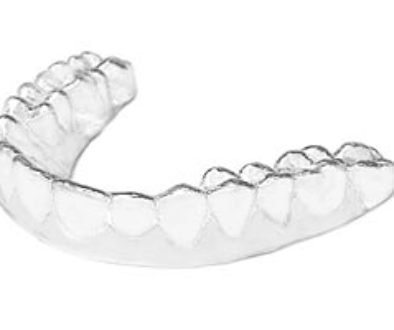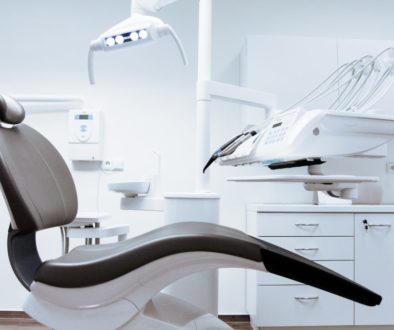What Is The Difference Between A Regular Cleaning and Periodontal Maintenance?
 A really common question I get asked after a patient has had treatment for gum disease is “Why can’t I just have a regular cleaning?”. It’s a good question and the answer is a bit more complicated than you’d expect.
A really common question I get asked after a patient has had treatment for gum disease is “Why can’t I just have a regular cleaning?”. It’s a good question and the answer is a bit more complicated than you’d expect.
In most cases this question comes down to cost. Regular cleanings are usually covered at 100% by dental insurance while periodontal maintenance appointments are covered at a lesser amount (and are more expensive to start). From your perspective, it can appear like the procedures are identical… thus the confusion. “Why should I be charged more for something that is exactly the same?” is the usual reaction. As we’ll see in just a bit, there is a good bit of difference between the two procedures.
What The Procedures Are:
The American Dental Association (ADA), the organization who sets billing codes for dentistry describes a regular cleaning (or “prophylaxis”) as “A dental prophylaxis performed on transitional or permanent dentition, which includes scaling and polishing procedures to remove coronal plaque, calculus, and stains.”.
Translation: A cleaning that removes any tartar, plaque, or stains above the gumline.
Periodontal maintenance on the other hand is described as, “This procedure is for patients who have completed periodontal treatment (surgical and/or nonsurgical periodontal therapies exclusive of D4355) and includes removal of the bacterial flora from crevicular and pocket areas, scaling and polishing of the teeth, periodontal evaluation, and a review of the patient’s plaque control efficiency. Typically, an interval of three months between appointments results in an effective treatment schedule, but this can vary depending upon the clinical judgment of the dentist. When new or recurring periodontal disease appears, additional diagnostic and treatment procedures must be considered. Periodic maintenance treatment following periodontal therapy is not synonymous with a prophylaxis.”
Translation: A cleaning that removes tartar, plaque, and stain both above and below the gumline. In addition to this, your hygienists also checks the pocket depths around the teeth (a good indicator of gum disease) and spends more time educating you on oral hygiene.
Removing tartar above the gumline is a relatively easy process. Removing it below the gumline takes quite a bit more skill and time. It is mainly for this reason that periodontal maintenance costs more than a regular cleaning.
When Should They Be Used?
A regular cleaning then, should be reserved for people with a healthy mouth and no signs of gum disease. It typically means you go for your regular 6 month checkups and have mild build-up above the gumline with no other signs of gum disease.
A periodontal maintenance appointment on the other hand is for anyone who has had treatment for gum disease in the past. You really can’t go back to a regular cleaning until you’ve demonstrated over the course of several appointments that there is no sign of gum disease.
Many dental offices will alternate a regular cleaning and periodontal maintenance on three month intervals. I’m asked by a lot of people to do this because it is what their previous dentist did. Unfortunately this is illegal. I personally called several different dental insurance companies that we work with in order to clarify whether this was ok or not. Every single one told us that someone who is a periodontal maintenance patient must stay as periodontal maintenance until gum health is proven. You can’t alternate between them. To alternate the two is actually considered fraud and your dentist can get in a lot of trouble.
How Do You Go Back To A Regular Cleaning?
In order to go back to a regular cleaning you have to demonstrate to your hygienist and dentist that your gum disease is in full remission. You probably know where I’m going here… You hear it every six months at the dentist! Yep, the age old instructions that you need to brush twice a day for two minutes (even better if it is an electric toothbrush), and clean between your teeth with floss, interproximal brushes, or a Waterpik. For most people it really is that easy! If you do these things it is almost impossible to have active gum disease.
Making these things a daily habit can be challenging early on. One thing I’d recommend trying is to floss before you brush your teeth. The vast majority of people brush their teeth on a regular basis because they like the feeling of clean teeth. Flossing on the other hand doesn’t give you that immediate positive feedback. If you wait until after brushing to floss it is easy to blow it off even if you have the best intentions. Pairing the flossing with an already established habit (brushing) makes forming good habits for flossing easier.
How Often Are These Procedures Done?
Most people who are seen for regular cleanings are seen every 6 months. Occasionally we’ll have people come in every 4 months if we know they build up tartar more quickly than other people. A shorter interval in between makes sure that the build-up doesn’t get out of control and cause you to need to treatment for gum disease. Honestly, if your gums are healthy enough for a regular cleaning and you’re doing a half decent job keeping them clean you shouldn’t need to be seen more than every 6 months.
Periodontal maintenance is a different story again. The interval in between maintenance visits can range anywhere from 2-6 months depending on the severity of your gum disease, your oral hygiene habits, and how quickly you build up tartar. More frequent visits are usually better especially early on after having treatment for your gum disease. These regular visits will keep your gums healthy and avoid the need to re-do the treatment. The most common interval is being seen every three months and this is what I what I would recommend for most people initially with re-evaluation done after 3-4 visits to see if a longer interval would be appropriate.




April 11, 2017 @ 6:51 pm
A good article articulating the differences as to when a deep cleaning versus a periodontal procedure is required.